Matador Network's Blog, page 527
February 16, 2022
Cool skateparks around the world

In 1987, at age 15, a crappy movie changed my life. The skateboarding in Police Academy IV inspired me to grab a board and practice the tricks I’d seen on the theater’s screen. My passion for skateboarding developed from there, and I soon started my own zine about the local skate/art/music scene in Denton, Texas, where I moved from Anchorage, Alaska, to skate year-round. My dream was to get sponsored and skate the world.
While my skills were better than some of the bros but not quite on par with the pros, my literary aspirations would end up picking up the slack in making my dream a reality. After getting a piece on skateboarding published in Sacramento’s now-defunct Heckler Magazine, I became a professional writing teacher and traveled the world that way, skateboard in hand, of course.
Being an itinerant teacher for the last 20 years, I’ve had the opportunity to visit and practice my skills on some of the most beautiful skateparks on the planet. This is my selection of cool skateparks that every skate amateur or wannabe pro should take the time to visit.
1. X-Dubai — Dubai, UAE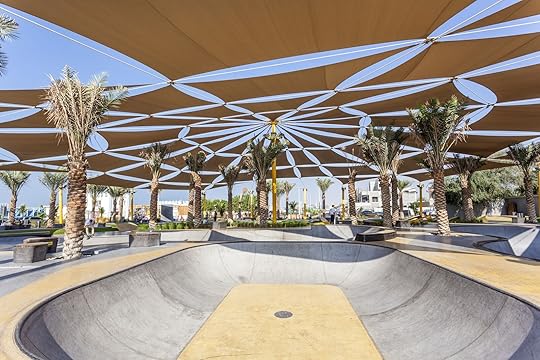
Photo: Philip Lange/Shutterstock
In a city obsessed with superlatives, how could the local skatepark disappoint? By combining the Kite Beach setting of date palms, white sand, and the clear Arabian Sea with Australian skatepark design knowhow, the designers at Convic have created not only the largest skatepark in the UAE at 34,444 square feet but also its most stunning. Under the big shade structure, there’s a seamless flow from the low-profile skate plaza to a 10.88 foot-deep bowl of polished concrete with gaps, ledges, and rails in between. You’ll be treated to the call to prayer ringing out from a nearby minaret more than once while performing tricks at X-Dubai.
2. Skatepark Taghazout — Taghazout, Morocco
Photos: SmallWorldProduction/Shutterstock and JON REMENTERIA/Shutterstock
On Morocco’s Atlantic Coast, just north of the city of Agadir, is Taghazout — a sleepy fishing village known for its killer surf and its cool panoramic skatepark. Built in partnership with local skaters and international volunteers from the Make Life Skate Life Foundation, the park draws inspiration from the North African surf scene and Islamic architecture while creating a unique, creative space for cultural exchange. The Taghazout Skatepark Association not only hooks up young local surfers who can’t afford gear with skateboards and protective accessories but also organizes skate classes three days per week (or whenever the waves aren’t pumping).
3. Venice Beach Skatepark — Los Angeles, California
Photo: lulejt/Shutterstock
In skateboarding culture, Venice Beach is hallowed ground. In the 1970s, the local DogTown crew and Z-Boys ushered in the vertical era of skating by being the first to perform aerial maneuvers in backyard pools. California Skateparks Designer Zach Wormhoudt (a Mavericks big wave surfer, no less) helped ensure that hometown hero Jesse Martinez’s 20-year battle to get a cool skatepark built in Venice would be done right, with help from technical design consultants Christian Hosoi and Pat Ngoho (skateboarding legends in their own right). The 2009 result is awe-inspiring. You can see the evolution from surfing to skating and the rich cultural history represented in the smooth flow of the concrete bowls, pool tiles, and snake run.
4. Skatepark Du Prado — Marseille, France
Photo: Red Bull Content Pool via Teddy Morellec/Instagram
If you’ve ever played the video game Tony Hawk’s Pro Skater, the Skatepark Du Prado (AKA Marseille Skatepark) will be very familiar. In the skate world, it’s that famous and was once even touted as the best skatepark in the world. With its clover-shaped pool, endless lines, and primo location on a topless beach in the south of France, I wouldn’t argue that Jean-Pierre’s urban masterpiece is anything less than perfect.
5. Kaos Temple — Alicante, Spain
Photo: Elchino Po via Ink and Movement
/Instagram
If Venice Beach is skateboarding’s hallowed ground, then the Kaos Temple in Alicante, Spain, is its Sistine Chapel. Transforming an abandoned 100-year-old church into something beautiful took a group of local skaters with a vision. Calling themselves the Church Brigade, they collaborated with urban artist Okuda San Miguel and his team at Ink & Movement to repurpose the dilapidated building into a psychedelic skate sanctuary. The resulting kaleidoscope of geometric faces and animal motifs painted inside play with the light from the stained-glass windows in much the same way the skaters play with gravity and physics on the halfpipe — creating a mystical atmosphere unlike any other skatepark in the world.
6. Zeeburg Skatepark — Amsterdam, Netherlands
Photo: Smeerjewegproducties/Shutterstock
Leave it to Amsterdam to mash up tradition, aesthetics, and function into a beautiful love triangle. By building this skatepark up rather than down (the Amstel riverbed upon which it stands would have it no other way), the Danish Agency Glifberg & Lykke has embraced the challenges of the typography while honoring the traditional land reclamation techniques that have spread the city far and wide. The typically Dutch Delft Blue tile, sprinkled throughout this cool skatepark, gives it a unique sense of place and local flavor.
7. Wanaka Skatepark — Wanaka, New Zealand
Photo: Molly Hope
Towards the southern end of New Zealand’s South Island, in the mountainous Otago Region, amidst beech forests, glaciers, and alpine lakes, you’ll find the burgeoning resort town of Wanaka. There on the glacial plain, on the shores of the town’s namesake lake is a cool skatepark designed by Jason Parkes of Premium Skatepark Designs. Standing on the edge of the 12-foot-deep clover-shaped bowl with snow-capped mountains in the background, you’ll aspire to greatness yourself and understand why this park has also become an attraction for snowboarders and free skiers alike — it’s so pristine and beautifully laid out that even in the summertime, you’ll feel like you’re carving through fresh powder at one of the nearby ski resorts.
8. Roller Vertical Exploration Skatepark — Quebradillas, Puerto Rico
Photo: Miguel Ramos/Instagram
It’s hard to beat a skatepark with an ocean view. Quebradillas Roller Vertical Exploration (RVE) Skatepark in San Jose, Puerto Rico, has a view of the Caribbean Sea framed by coconut trees, no less. What started as Miguel Ramos’s DIY lovechild back in 1988 has since blossomed, thanks to skatepark designer Stefan Houser, into a Boricua beauty that has it all — a silky surface, beautiful curves and vertical extensions that keeps skaters coming back for more.
9. Burnside Skatepark — Portland, Oregon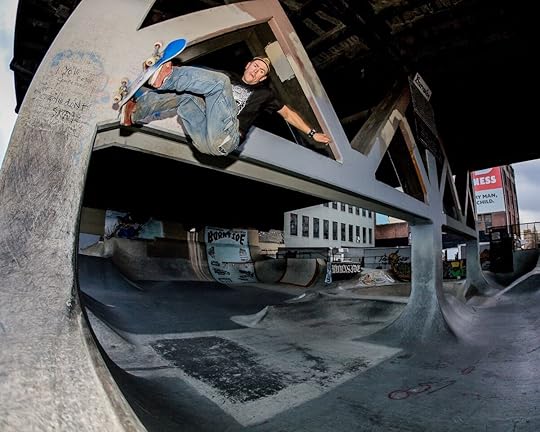
Photo: David Hupp
What makes the original DIY skatepark under the east end of the Burnside Bridge in Portland, Oregon, so beautiful is that it epitomizes the rebellious nature of skateboard architecture. Like most of the DIYs it has inspired since its inception in 1990, Burnside was built without permission in an urban wasteland. It has since become an icon of the skateboarding world, a concrete testament to the belief in the freedom of personal expression and a legitimate stop on the Portland Walking Tour.
10. La Duna — Ciudad Juárez, Mexico
Photo: The Elias Group/Instagram
With an undulant pink concrete landscape that’s reminiscent of the Samalayuca Dune Fields in the Chihuahuan Desert, La Duna beautifully embodies the next generation’s way of thinking about the role cool skateparks can play in an urban environment. The local municipality commissioned the Elias Group to design a skatepark that would draw the community together to improve marginalized barrios. By wrapping a cycle track around the skatepark’s three zones — a bowl, street, and beginner’s area (separated by endemic trees and desert flora) — and building a viewing deck with a classroom/office combo underneath, the skatepark has been integrated into the existing recreational area and connected to the surrounding neighborhood, encouraging youth and adults alike to engage with the space.
11. Pura Pura Skatepark — La Paz, Bolivia
Photo: Milton Arellano
At 13,000 feet above sea level, Pura Pura is the highest skatepark in the world. What’s so beautiful about this place, aside from the swaying eucalyptus trees all around and the stunning view of snow-capped Mt. Huayna Potosi in the distance, is that it embodies the collaborative yet anarchistic spirit of skateboarding. Pura Pura Skatepark was a global DIY collab with over a hundred volunteer skatepark builders from 17 different countries camping out on site for a month to give youth an outlet for their energies.
12. Skatepark Péitruss — Luxembourg
Photo: degetzica/Shutterstock
A cool skatepark inspired by a 16th-century impregnable fortress? Just on the outside wall of the medieval city of Luxembourg, you’ll find just such a park next to the bridge leading into the old city. By incorporating the same hexagonal patterns from the town’s Vauban Fortress and coloring the skatepark with a palette of maroon, gray, and white concrete, the designers at Constructo Skatepark Architecture have created a thoughtful and fun homage to the site’s heritage. By integrating levels that separate the sections of the park (bowl, flow, plaza), they’ve blended it into the patchwork parkland of the Péitruss Valley — popular for its playgrounds, fitness parks, pathways and picnic areas.
13. North Houston Skatepark — Houston, Texas
Photo: Lance Childers
With its smooth lines and seemingly endless curves, the North Houston Skatepark is not only one of the most beautiful, but at 78,000 square feet, it is also one of the biggest in North America and the second-largest in the world. The folks at Grindline took the maxim, “bigger is better” to the extreme with a 10-foot-deep bowl made in the shape of Texas and a 20-foot-tall full pipe right in the heart of it. For those leery of riding such a huge tube, there’s a gigantic (yet mellow) Lone Star at the heart of the street section that will send you careening towards an endless array of ledges, rails, benches, banks and quarter pipes. And there’s also a 12-foot vertical ramp, backyard-style pools, three flow bowls, and a snake run.
14. Oslo Skatehall — Oslo, Norway
Photo: Finn Ståle
The Scandinavian aesthetic is in full effect in this cool skatepark designed by Dark Arkitekter, Glifberg-Lykke, and IOU Ramps. Skatehall is sheathed in aluminum panels pierced with a pattern derived from a Morse code translation of the 1978 law that banned skateboarding in the entire country. While industrial on the outside, it’s decidedly organic on the inside thanks to its centerpiece – the mezzanine floor wooden bowl. With its tree-like columns stretching out and supporting the bean shaped bowl overhead, it feels like skating under a canopy of white spruce and birchwood in a Norwegian forest. The adjacent cafe and upper walkways ensure spectators can take in the scene from all angles without disrupting the flow of the skaters.
15. Skatepark La Faute-sur-Mer — France
Photo: Constructo Skatepark Architecture
On France’s Atlantic coast, between the Lay River and the Bay of Biscay, you’ll find a super cool skatepark. Basing the concept on sand and sea, the guys at Constructo Skatepark Architecture used blue and yellow concrete to reflect the local environment and to help revitalize the area that was submerged in 2010 by Storm Xynthia. Besides the color scheme in the bowls, street area, and snake run, what makes this park unique is that it marks a new era in skatepark construction. Skateparks are now seen as an asset — as a way to makeover a city, to create a young and dynamic new image. 
This Airbnb guest was charged for air conditioning and people have strong feelings about it

Renting an Airbnb over a hotel has its perks. Turns out if you book with the wrong host, free air conditioning is not one of them. TikToker Anjelo Casiano posted a video showcasing an air conditioning unit that required coins to turn it on. In just a week, the TikTok video has garnered almost 343,000 views on the platform. The clip was captioned “When your Airbnb host charges you for air.”
All clues suggest the property is based in Spain, as the brand of the lockbox is said to be produced by a company in Madrid, according to the Daily Dot, and in previous videos, the TikToker spoke of their month-long trip in the region.
The brand of the lockbox said the product is “for saving and controlling the cost of electricity in hotels, hostels, rural houses, and all types of accommodation. They work by time, by coins or tokens.”
Many people in the comments were as shocked as Casiano:
“Instant 1 star review.”“If a host is seriously going to be that stingy, they shouldn’t be renting their house out.”“Airbnb used to be cool but now it’s just boomers trying to squeeze every penny out of vacationers,” some of the comments read.Although many commenters agree with Casiano that the coin-operated air conditioner was a bit much, others sympathized with the Airbnb host.
“Me searching for this device. Love it, love it, love it!”“Seems fair to me, wanna blast a all day & waste power = pay up!”“Electricity in Europe is more expensive than in the US and even more so in Spain due to the crisis there right now.”@papiwhiterice #airbnb #travel #viral #trending #tiktok ♬ Originalton – POV’s
The crisis the commenter was referring to was reported on by The Times in September 2021, which noted that the Spanish government faced “a growing crisis after months of rising electricity bills that have led to popular discontent at some of the highest rates in Europe.” The cost of electricity in Spain had reached “historic peaks” with customers paying an average of €140 ($159) per megawatt-hour — a threefold increase on the previous year.
But don’t be discouraged. There are plenty of amazing Airbnbs to stay at in Spain that (probably) don’t charge for air conditioning. And as long as you follow some basic rules to respect your host, things should stay nice and cool. 
From cheesy bread to fried milk, a guide to the best Carnival foods to try

Carnival is one of the biggest parties on the planet, a centuries-old tradition celebrated mostly in Central and South America, though there are parades and festivities worldwide, from Italy to New Orleans. Carnival stems from Christian religious rites: The party is held before Lent, a religious observance during which Christian people often fast, or give up a beloved pastime like television or sports, in honor of the 40 days Jesus Christ spent fasting in the desert. Carnival is the last hurrah, where everyone – regardless of religious affiliation – gets to eat whatever they want, drink to excess, and engage in general debauchery until Easter. Perhaps that’s why Carnival foods are so mouth watering and delicious, from savory to sweet snacks. The raucous celebrations are marked by bombastic displays that allow revelers to let loose – elaborate costumes involving wigs, rhinestones, masks, and feathers are commonplace.
Regardless of class, religion, or social status, participants find unity indulging their vice – and food is a big part of what makes these parties so legendary. During Carnival, street food is king; mostly-handheld party fuel gives energy to revelers dancing on the street from day to night. Whether hot or cold, savory or sweet, here are ten signature Carnival foods by country that revelers can sample between dance parties.
1. Rio de Janeiro, Brazil: Pão de queijo
Photo: rocharibeiro/Shutterstock
An estimated 2 million people are on the streets every day during Rio’s world-famous Carnival. It’s been recorded as the world’s largest Carnival by the Guinness Book of World Records. Pão de queijo is nearly as ubiquitous as the gorgeous costumes and people. A popular breakfast and snack food, pão de queijo has several variations, but its main characteristics are starchy cassava flour and cheese. Although the dough is unleavened, the elasticity of the cassava, along with the expansion of warm air during baking, give these cheese balls their signature texture and consistency.
2. Venice, Italy: Fritole veneziane
Photo: Poter_N/Shutterstock
Although savory foods are popular during Carnival season, the sweet fritole veneziane is essential during Venice, Italy’s Carnival. These fried sweet fritters are filled with liquor-soaked raisins and pine, nuts then dusted with granulated sugar. This historic snack dates back centuries—a recipe for it can even be found in a document from the 1300s in Rome’s Biblioteca Nazionale Catanese.
3. St. George, Grenada: Oil down
Photo: RCB/Shutterstock
Grenada is known as Spice Island, and for a good reason. The lush isle is abundant in nutmeg, allspice, clove, and cinnamon, making for a fragrant island breeze. Oil down is Grenada’s national dish and a simmering pot of Grenada’s rich cultural history. This hearty stew consists of breadfruit, salted meat, dumplings, callaloo, and other veggies simmered in coconut milk, herbs, and spices. It’s a culinary heavy hitter at Spicemas, Grenada’s name for their Carnival.
4. New Orleans, USA: King cake
Photo: DeliriumTrigger/Shutterstock
King Cake is believed to have been brought to the Gulf Coast in the 18th or 19th century, either by Basque or French settlers. More straightforward recipes describe cinnamon-roll textured dough, twisted into a ring and often topped with icing or sugar. More complex recipes fill the king cakes with cream cheese, coconut, or strawberries. Traditional king cakes are iced and topped with glitter in Mardi Gras’ signature colors: purple, green, and gold. They symbolize justice, faith, and power. Many king cakes contain a small plastic baby to represent Jesus. Whoever finds the baby in their slice of the cake is the designated party host during the next year’s Mardi Gras.
5. Nice, France: GansesGanses, also known as beignets de Carnaval, are deep-fried fritters dusted with powdered sugar. Ganses were traditionally prepared for Fat Tuesday, but these days, they can be found in French bakeries, especially during Carnival season. Although there are many regional variations of Carnival donuts, Nice’s ganses are made with orange blossom water.
6. Port of Spain, Trinidad and Tobago: Pelau
Photo: pansticks/Shutterstock
Pelau is a rice-based dish that combines rice, peas, and coconut milk with meat that has been caramelized in sugar. Although doubles are a signature street food of this twin-island nation, pelau is another favorite due to its flavor, filling ingredients, and ability to be devoured at any temperature, making it the perfect food for liming (a slang term for socializing in the Port of Spain) during carnival season.
7. Barranquilla, Colombia: Arepas
Photo: Clara Murcia/Shutterstock
With Barranquilla Carnival’s status as the second-largest Carnival celebration in South America, and arepas’ status as an integral part of Colombia cuisine, the two go hand in hand. Arepas are an iconic part of Colombian cuisine, with dozens of forms of preparation and fillings. Ground maize dough patties are cooked and stuffed with cheese, meats, eggs, seafood, or beans. Their endless variations and street vendors make them the go-to for Carnival food, plus this hand held snack is to eat on the go.
8. Kingston, Jamaica: Fried escovitch
Photo: AS Food studio/Shutterstock
Red snapper is a popular fish used in Jamaican cuisine; it’s filling, fragrant, and can be either fried and baked. During Carnival in Kingston, Montego Bay, and Ocho Rios, crispy fried escovitch can be found, often served with a side dish of the aptly-named festival, otherwise known as sweet dumplings.
9. Oruro, Bolivia: CharquekanCharquekan is a favorite throughout Bolivia, but the original recipe hails from the Oruro Department, a city sitting at a dizzying 12,2544 feet of elevation. This dish’s main stars are shredded llama or beef jerky served with boiled eggs, cheese, corn, and purple potatoes.
10. Mazatlán, Mexico: Camarones, every way!
Photo: JoannaTkaczuk/Shutterstock
As the titleholder of oldest Carnival in Mexico and the third-oldest Carnival globally, Mazatlán knows how to kick off a pre-lenten celebration. Mazatlán is one of the largest shrimping ports globally, and camarones are abundant, inexpensive, and fresh. The possibilities are endless—camarones are served on ceviche tostadas, in omelets for breakfast, and even shrimp burgers.
11. Tenerife, Canary Islands: Leche frita
Photo: AS Food studio/Shutterstock
Leche frita (literally fried milk in Spanish) is a sugar-glazed sweet treat hailing from the northern regions of Spain. They become more prevalent during Carnival season and make frequent appearances at the Carnival of Santa Cruz de Tenerife. Fried dough is made from flour and milk simmered with sugar, cinnamon, and lemon zest. 
I’m an advanced skier but tried skiing with a guide anyway. Here’s why I loved it.

the bright midday sun poked through a thinning wall of ponderosa pines as we shuffled 180 degrees around a sharp switchback. The treeline — the point of elevation above which the environment is no longer suitable for most plants to survive — was 100 feet above my head. Drawing nearer, I realized we were surrounded on two sides by cliffs dropping over 100 feet in places to the open bowls of snow and rock below.
Stopping for a gasp of air (and a drink of water), my guide, Bill Allen, offered a choice. We could proceed just a little further and drop into a backcountry ski run to our right through an open bowl of crusty powder. Or, we could wind around the back of the upcoming peak and drop in on the other side where a steep-but-short couloir would drop us into a wide-open field of softer snow.
We’d been uphill skinning for three hours. I’d strapped synthetic skins (hence the name) to the bottom of my split snowboard to create traction so I could move uphill without sliding back down. But carrying half a snowboard on each leg was hard and my legs were beginning to ache. And my heart was racing. No matter how many days I spend above treeline, the potent mixture of direct sunlight, thin air, and a rapid-fire heartbeat always catches me by surprise.
Despite my encroaching fatigue, we opted for the longer approach to guarantee a better run down. I had joined Bill, co-owner of tour operator Mountain Trips, on a backcountry ski day tour organized by 57Hours, an adventure app that connects travelers to backcountry guides across the country.
“I’m about even in skills and knowledge with my usual backcountry partners, so our collective knowledge takes a major hit when we travel somewhere new. 57Hours solves that problem.” – WriterMy guide’s helpfulness began before even strapping on our skis
Photo: Tim Wenger
Bill and I met at a trailhead in Ophir, a tiny mountain town outside of Telluride, Colorado, at 8 AM. Our original plan had been to shuttle to a different trailhead, myself and my backcountry ski gear hopping into his truck before returning at the end of the day. But due to promising conditions in the mountains of the nearby trailhead and an avalanche report that looked favorable on all but the west-facing slopes, Bill brought up the idea of touring from our meeting point. Multiple options for adventurous couloir runs awaited, he said, and we’d have more access to line choices that looked good and safe, rather than being fully committed to the one path we’d have to take to end up here from the other trailhead.
I didn’t argue.
We did a beacon check, a process to test each person’s avalanche beacon to ensure it’s working correctly and has sufficient battery life. Then, we hit the trail for what Bill expected to be a three-hour climb.
Three hours of uphill touring to access a long downhill run from the top of a peak is a decent excursion and a big commitment for an average-level backcountry skier. But many popular backcountry runs in Colorado are accessible via a climb of two hours or less.

Photo: Tim Wenger
I’d done tours requiring this long of a climb before. But because I had never toured in this section of the San Juan Mountains known as the Nevada Zone, having a local expert like Bill leading the way helped me feel more comfortable taking a steeper line down and making key decisions on the fly. 57Hours partners with his outfit to take adventurers visiting Telluride on guided backcountry expeditions. Because Bill lives and guides in the area, his knowledge of terrain quality and safety based on variables like recent snowfall, time of day, and weather conditions, proved invaluable.
Even after checking the day’s avalanche report, I tend to be conservative when choosing backcountry ski lines unless I’m in a zone I know very well in low-risk conditions. Having Bill’s knowledge ensured that our group picked a fun and worthwhile route down and did it as safely as possible. Of course, there are inherent risks involved in backcountry skiing, but local knowledge, proper planning, and a willingness to change the plan based on in-field evaluation minimize those risks. I can tell now from doing both guided and unguided trips that having a guide lead the discussion and decision-making process is the best way to manage group decisions.
I also tend to ride with only a select few partners in the backcountry. I won’t enter the backcountry with anyone unless they have a beacon, shovel, and probe. I’ve taken several avalanche awareness and education courses through the American Institute for Avalanche Research and Education (AIARE), and prefer to tour with partners who have completed at least the first level of training. In the very rare case that a skier is buried in an avalanche, the responsibility of finding that person relies entirely on the skills and knowledge of the non-buried skiers.
I prefer to be the least-experienced person in the group, even if that sounds a bit counterintuitive. I’m about even in skills and knowledge with my usual backcountry partners, so our collective knowledge takes a major hit when we travel somewhere new. 57Hours solves that problem by pairing backcountry travelers with local guides to fill in the information and geography gaps.
Our guide found perfect views and a perfect downhill line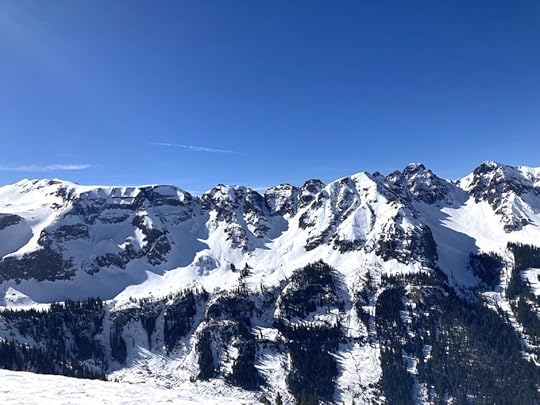
Photo: Tim Wenger
Two more switchbacks put us well above treeline. The jagged San Juan Mountain peaks, formed of volcanic rock, encircled us on three sides as though we were in a massive, rock-lined amphitheater (at 12,000 feet above sea level, no less). We circumnavigated the peak’s summit and stopped above a couloir on the far side, where we transitioned from our uphill setups to our downhill setups. As a splitboarder, this meant stripping the skins from the bottom of my splitboard and reconnecting the two halves to form a complete snowboard. I stuffed the skins into my backpack, and swapped out my beanie for a helmet and sunglasses for goggles.
Looking over the edge into the couloir, I was suddenly gripped by nervous excitement. My goggles fogged as moisture dripped from my right eye. The run was steep, well above the 30-degree incline that signifies an increased avalanche risk. We came up with a plan, and Bill headed down first to test the snow and identify a safe stopping point.
I dropped in next, hopping down a couple of feet to reach the lowest-impact entry point. The further to the right I looked, the more the drop into the run increased, eventually reaching around 10 feet at the far side. Now just inside the narrow, snow-filled gully, I looked back up at where I’d just come from. It’s then I noticed that Bill was at the bottom with his phone out, filming my descent.

The view looking down just before dropping in // Photo: Tim Wenger
I hopped a quick 180 turn and slowly began to ski toward the left rock wall, making tight turns to zig-zag my way down the narrow chute. I probably made about seven or eight turns, gaining speed and confidence as I neared Bill at the bottom. My smile was ear-to-ear as I pulled up next to him, where we slapped a high-five and commented on the fantastic snow quality — Bill definitely knew the best spot to go.
From there, the next section was equally amazing. Below us sat a wide-open field of powder with a lower avalanche risk because of its less-angled slope. It would carry us most of the way down, eventually hitting a snow-covered access road leading back to the trailhead.
“Time to let ‘er rip,” Bill said.
He dropped first, his skis effortlessly carving turns through the snow, forming an S-shaped line through the bowl before dipping into the forest below. When he reached a safe stopping point near the edge of treeline, he lifted a ski pole in the air to signal that it was my turn to drop in.
I followed just to the right of his line, my splitboard turns longer and wider than his ski turns. The tracks of my snowboard across his ski tracks created a beautiful helix shape in the snow that called for an unapologetically exuberant “Whooooo!” when we saw it from below. Our lines carved two passion-fueled ribbons from the couloir into the bowl, making tiny marks in an otherwise uninterrupted blanket of white.
“This is what snowboarding is all about,” I thought to myself as we proceeded through the trees. “This is why I hike up mountains in the middle of winter, even when it’s so much easier to hop on a chairlift.”
We traversed the snowed-over road slowly, though I had to unstrap one foot in a few sections to push myself along. Fortunately, the motivation was cold beers waiting in the bed of my truck. Handing one to Bill after unstrapping, I found myself envious of his job but thankful for his company. Without it, I’d never have found this trailhead or known where to turn to find the best snow. With his guidance, we’d planned and executed a full-day tour in an area I’d never been to. And we’d done it safely while making decisions on the fly to ensure the best route down. It was adventure riding in the truest sense.
How does 57Hours work?If you’ve ever booked a guided tour on vacation before, using the 57Hours platform works similarly. The website prompts users to search for adventures based on location, then displays available tours in that area. To book this Telluride tour, I selected “Backcountry Skiing in Telluride” from the options displayed, and proceeded to select the date that worked for me.
Once confirmed, 57Hours connected me with Mountain Trips. I received a phone call from Bill Allen, my guide, to discuss what I wanted out of the tour, including length, difficulty, and whether or not I needed rental gear, which is available for activities that require it.
The day before the trip, 57Hours sent out an email with details on what to expect and an itinerary. Day of, I received a handy email about gratuity that even included a calculator so I knew how much to tip based on the cost of the trip.
The experience was smooth and easy, and saved me a bunch of time that would have otherwise gone into researching local guides in Telluride and finding a backcountry tour that met my needs.
Learn more about 57Hours Telluride backcountry ski tours
Heading to Telluride on a ski trip? Check out Matador’s guide to the best Airbnbs near Telluride. 

Credit: Bill Allen
We hope you love the backcountry snowboard gear we recommend! Just so you know, Matador may collect a small commission from the links on this page if you decide to make a purchase. Listed prices are accurate as of the time of publication. See our full Advertiser Disclosure here.
Proper backcountry use involves a dedicated lineup of gear, including skis or a snowboard, poles, a helmet and more. It’s quite expensive to buy new, so if it’s not in your budget, you may be able to rent all your backcountry ski and snowboard gear from a local outdoor shop or REI location. Guiding companies can sometimes arrange your rentals, too.
But if you’re ready to buy, here’s my gear stack as a starting point for building our your own touring set-up.
Backpack: USWE POW Series 25L ski and snowboard touring pack
Price: $249.95
Splitboard: Jones Snowboards (I ride a Jones Explorer 156)
Price: $749.95-$1,399.95
Bindings: Spark R&D Blaze splitboard bindings
Price: $285
Poles: Black Diamond Equipment Vapor Carbon Ski Poles
Price: $112.46
Beacon Backcountry Access Tracker 2 Avalanche Beacon
Price: $299.95
Shovel:
Yukon Charlie’s Collapsible Shovel
Price: $32.78
Probe:
K2 BCA Stealth 270 Avalanche Probe
Price: $59.95
Flight attendants explain why airline dress codes for passengers exist

Dress codes are something you’d typically associate with nightclubs, dinner parties, and weddings – not going on an airplane. Yet in January, actress and fashion influencer Olivia Culpo made headlines when she was pulled aside before boarding her American Airlines flight to Cabo San Lucas and told her outfit was inappropriate. Apparently, her black bralette, biker shorts, and cardigan weren’t in line with the airline’s dress code for passengers, and she was asked to cover up before being allowed to board.
The incident ignited a firestorm of reactions online, with some defending the superstar and others lambasting her outfit. Regardless of your stance on the issue, for many people the controversy raised one key question above all else: “Wait, airlines have dress codes?”
Yep. Wearing jackets, ties, and dresses in flight might not be as ubiquitous today as they once were, but there are still wardrobe rules – both written and unwritten – that airlines expect passengers to follow. We spoke to some experts to learn more about these little-known airline dress codes, and how not to accidentally violate them.
Airline dress code for passengersAirplanes aren’t nightclubs. Flight attendants aren’t stationed at the gangway looking to turn people away because their shoes don’t match their shirt. They are, however, prepared to ask passengers to change if their outfit is deemed inappropriate according to the specific airline dress code for passengers.
“Shirts with vulgarities and offensive pictures or language are definitely off-limits,” says Intan, a former flight attendant with Jetstar International Airways and Qatar Airways, adding that people can’t wear anything “too revealing.”
Revealing clothing seems to be a major culprit, and significantly targets women over men. It also happens to be the most-often flagged dress code violation by the flight crew.
“Some female passengers have come on board with very revealing clothing,” she says. “Think bikini under an unzipped hoodie and micro shorts. They may be heading to Bali for a wonderful summer vacation, but needless to say they’re told nicely by the ground staff to cover up.”
More like thisNewsAmerican Airlines tells Olivia Culpo to ‘put a blouse on’ before boarding her flight to CaboDifferent airlines, however, have different rules. What’s true for a domestic airline like Alaska Airlines, American Airlines, or United Airlines may not be true for airlines based in other countries that have different cultural norms.
American Airlines, for example, lists in its conditions of carriage that passengers must ““Dress appropriately; bare feet or offensive clothing aren’t allowed.”
“On Qatar Airways,” Intan says, “the dress code is a little stricter, as the mid-point is a conservative Muslim country. Some passengers may want to visit Doha as a stopover, but they must observe the strict dress codes – no sleeveless shirts, and pants must be no higher than your knees.”
Why do dress codes for airlines exist?
Photo: Hananeko_StudioShutterstock
Air travel is tedious and uncomfortable enough. Why impose even more restrictions on passengers? Well, it’s not as puritanical as it might sound. According to Intan, airline dress codes are mainly to “avoid offending anyone onboard, and avoid conflicts in flight that could lead to flight delays.” Maintaining harmony is key mid flight, after all.
Some dress codes also serve a more practical purpose.
“Passengers cannot come onboard bare-footed because they might cut their foot on debris on the ground and require medical attention,” Intan says. “Every rule is to ensure customers’ safety.”
What to wear on a planeCarolyn Paddock, a former flight attendant for Delta and the founder of In-Flight Insider, a bespoke company for private jet owners and travelers, advises travelers to dress nicely even if they’re not doing so to adhere to a dress code.
“Dressing well makes you stand out in a positive way,” she says. “In many ways it’s a sign of respect, and airline employees respond very well to seeing passengers who are dressed well.”
And take note: According to Paddock, well-dressed passengers are more likely to be eligible for upgrades than those dressed sloppily.
“One unwritten rule is that dressing well makes you a candidate for potential upgrades,” she says. “On one occasion, when I was flying for a commercial carrier, we were boarding an oversold flight from New York to Milan. Coach was oversold, and there were open seats in Business Class that we were going to use to accommodate our passengers. The gate agent asked me to choose six ‘appropriately dressed’ people for the upgrade. I walked through the coach cabin and chose six passengers who were the most polished and well dressed.”
What happens if you break an airline’s dress codeBreaking an airline dress code for passengers won’t get you tossed out the emergency exit door, but there are repercussions that could inconvenience you and your fellow passengers.
“Most likely, offending passengers will be asked to change before being allowed to fly,” Intan says. “Failure to comply may result in the person being offloaded. It’s a messy process and will ruin holidays, so please comply with the instructions of the flight attendant. If the passenger still refuses to listen, they could potentially be blacklisted from flying on the airline.”
Flight attendants are not, however, out to ruin trips or make life difficult for passengers.
“For rule-breaking passengers, flight attendants have to deal with the situation respectfully and tactfully,” Intan says. “We are not out to ‘slut-shame’ anyone, or to embarrass these passengers. We are on a plane with more than 100 people at one time, and you never know who you might offend if you’re wearing something with lewd remarks or obscene photographs. We are also helping to prevent anyone from being sexually harrassed on flights.”
Yes, flight attendants have dress codes too
Photo: Susan B SheldonShutterstock
This isn’t a “rules for thee but not for me” scenario. Dress codes for flight attendants are much stricter than those for passengers.
“Dress codes for the flight attendant uniforms are pretty conservative,” Intan says. “We get checked every time we sign on for our flights. Failure to comply may result in us not being able to work that flight. On some airlines, we are required to use company-issued bags. No personalization (keychains, ribbons) is allowed, some airlines don’t allow digital watches, and all visible tattoos must be covered up. We must also keep our hands impeccable at all times. For the ladies, no chipped nail paints; men, no long fingernails.”
Flight crew dress codes even apply to off-duty crew members taking a leisure flight on their airline.
“Any staff traveling on discounted tickets are bound to a stricter dress code, regardless of the airline you may be flying for,” Intan says. “That means smart casual — no jeans, no collarless shirts for men, and avoid sneakers. Once, my shoes broke on the way to the airport on staff travel, and I had to change to a pair of sandals. They were not sloppy, and the ground staff was hesitant to let me board.”
And dress codes for airline staff used to be far stricter than they are now.
“When I first started flying for Delta in the 90s, not only did we have strict appearance guidelines, we used to have to stay within our weight limit as well,” Paddock says. “If we were over our max weight we would be first warned, then removed from in-flight flying status until we lost the weight.”
It didn’t end at weight checks, either.
“We also had appearance checks when we signed in for work to make sure we were fully in compliance with our appearance standards,” she says. “For example, long hair had to be pulled back in a bun, ponytail, or French twist. Hair could not fall beyond our chin when leaning forward. Jewelry had to be modest and earrings no bigger than a quarter.”
The specific airline dress code for passengers — and for flight attendants — tend to change over time. When it comes to figuring out what to wear on the way to your next vacation, just know that the airlines may be paying more attention to your outfit than you realize.
10 alternative spring break destinations for introverts

College spring break typically alludes to sandy booties, half-naked dudes glorifying their lobster-red muscle tank tans, and a whole lot of local Floridians annoyed by the influx of debauchery and littered Budweiser cans. While extroverts may be all over glow sticks and dance contests, what about alternative spring break vacations for introverts?
Good news: your spring break week doesn’t have to necessitate claustrophobic beaches with clamoring sun-seekers doing beer bongs (yikes) or waking up in bed at 3:00 PM naked next to Sally from Freshman Econ (double yikes).
Approximately 40 percent of the population would label themselves “introverted,” meaning they need alone time to recharge those batteries. Luckily, we’d consider spring break to be the optimal retreat from reality before the semester ensues. You may not need to hide from the entire world, but there’s nothing wrong with a mental break from the grind to refuel energy and bask in your introverted glory (and some much-needed sun).
And don’t just take our word for it: Dr. Dana Wang, a psychologist at RIVIA Mind, says, “If you get to have a choice on how you spend spring break, I will encourage you to honor this need for introspection and engage in self-care by going into nature or spend some time alone. Only after adequate recharging, an introvert can be ready for new experiences without feeling overwhelmed.”
Here we’ve done our due diligence and compiled a list of ten spring break vacations for introverts that will allow for maximum recharge and relaxation.
Best vacations for introverts in the USBest beach vacations for introvertsBest international spring break vacations for introvertsBest vacations for introverts in the US1. Los Angeles, California
Photo: 2M mediaShutterstock
Okay, so Los Angeles, the second-largest city in the US, may not initially seem like the best vacation spot for introverts, but hear us out. LAX is one of the world’s largest international airports, so escaping here from your college town won’t be terribly tricky. There are more than six-lane highways and those creepy Elmo impersonators dotting Hollywood Boulevard in LaLa Land. There are plenty of solo hiking opportunities within the city limits, and the neighborhoods outside downtown are surprisingly subdued.
Plus, some fantastic deals on hotels lend themselves to the ultimate staycation — and what do introverts crave more than cozy sheets, a novel, and some solitude? For that dual alone time and eye candy, we recommend booking a balcony room at either the historic Beverly Hilton or (if mom and dad are helping out) the famed Beverly-Wilkshire Hotel perpendicular to Rodeo Drive. Both are incredibly walkable and close enough to the action without being overwhelming.
2. Door County, Wisconsin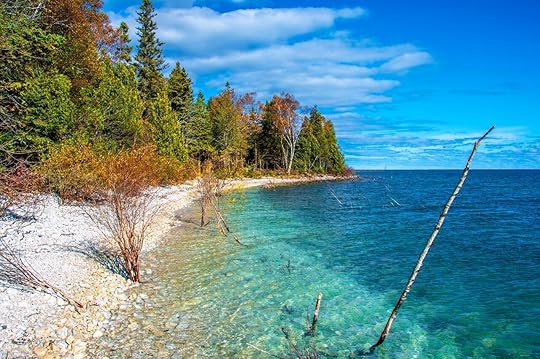
Photo: Nejdet DuzenShutterstock
Wisconsinites have such an affinity for the outdoors that they even have a hard-to-pronounce Scandinavian word to describe it: Friluftsliv. The term, first popularized in the 1850s by Norwegian playwright and poet Henrik Ibsen, expresses the value of spending time in remote locations for spiritual, mental, and physical recharge and prosperity. And let’s face it: that sounds pretty refreshing for the introvert’s holiday, literally and figuratively.
With large open spaces, small populations, and this inherent engrained passion for the outdoors (thanks Scandi ancestors!) Door County, Wisconsin, is one of our top vacations for introverts because you be immersed in nature while avoiding humans for an entire seven days.
And the best thing? Door County’s temperatures fluctuate through the spring, allowing a diversity of activities in nature. If that Wisconsin winter chill is still lurking, adventurers can brave the chill to ice fish or even ski down a candlelit nature preserve at night. If the weather is warming up, introverted nature-aficionados can hike The Ridges Sanctuary, Wisconsin’s oldest non-profit nature reserve, or even take a fat tire e-bike to Whitefish Dunes State Park.
3. Winter Park, Florida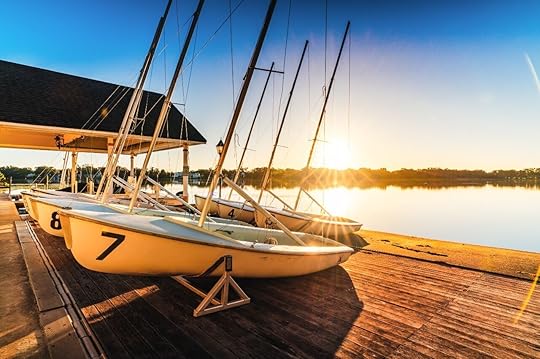
Photo: Rafael LaurentinShutterstock
Winter Park maybe about ten minutes from the overstimulation of Orlando, but we promise it’s a different – albeit equally magical – world. Why? If your introverted self is looking to bypass copious Mickey Mouse hugs and crowds but still soak up that killer central Florida heat, then Winter Park is the obvious choice.
It’s this idyllic pinpoint of verdant paradise and nature; with tree-lined streets and an abundant array of food, shopping, and cultural activities, you’ll be able to develop a tan while solo-exploring. And The Winter Park Scenic Boat Tour, a relaxing narrated cruise through the lakes and canals of the town’s historic sector, is optimal for bird-spotting.
4. Alaska
Photo: Galyna AndrushkoShutterstock
If you’re just really craving that break from other humans (aren’t we all?), the Alaska Wilderness a la Alexander Supertramp may be the solution. We’re not specifying where in the state to go because all of Alaska – yes, all 663,300 square miles – is quite the refuge from reality.
The Great Frontier is surprisingly accessible from the West Coast, with less than five-hour flights from California. And you’ll soon be immersed in the company of eagles, moose, bears, and the occasional humpback whale. For that pivotal solitary experience, take your camping gear up to this abandoned logging camp in Hobart Bay, 70 miles south of Juneau.
If more keen on activities, we suggest a seven-night UnCruise. Like the name infers, this isn’t your stereotypical “floating hotel yadda yadda” cruise, but a company that crafts itineraries off chartered courses, with fewer faces and open spaces. Folks will enjoy a melange of introvert-friendly activities like hiking, kayaking, whale-watching, and the occasional Northern Lights viewing. And no WiFi onboard means you can genuinely unplug without worrying your roommate will drunk text you about her ex-boyfriend drama. Ah, paradise.
5. Mesa, Arizona
Photo: VyshnivskyyShutterstock
Mesa’s physical location alone makes it the pinnacle of introvert vacation spots. Shadowed by neighboring Pheonix, Arizona’s capital which often receives worldwide recognition for its plethora of cultural and arts offerings, Mesa is the more understated yet equally accomplished little sister.
But that’s not a bad thing: twenty miles east of the Pheonix metropolis, this smaller city is surrounded by expansive deserts, mountainous hiking trails, and even orange groves blossoming with sun-kissed fruits.
While nature does that talking here, your stomach may do the grumbling. Mesa serves as the culinary getaway to Greater Pheonix, and agrotourism is increasingly popular here. Introverts keen on sampling all the deliciousness should take a road trip down Mesa’s Fresh Foodie Trail, highlighting the area’s bountiful yearlong harvest on local family farms.
For introverts looking to use spring break as an excuse to forget the real world exists, The Cozy Peach at Schnepf Farms is the secluded spot to post up. Set amid a 300-acre organic peach farm, you’ll wake up in one of the nine refurbished airstream trailers each morn’ to views of the San Tan Mountain range. Even better, the farm owners have been known to prepare meals for guests with fresh fruits and veggies picked right from their organic garden. Sounds peachy!
Best beach vacations for introverts6. Hawaii
Photo: Kuznetcov_KonstantinShutterstock
While you might be getting a different type of l’eid this spring break (har har), Hawaii is the Holy Grail of beach vacations for introverts. Being 2,390 miles from California and 3,850 miles from Japan, it is legitimately the world’s most isolated landmass (so, uh, one of the world’s ideal vacation spots for introverts.) Still, for West-Coasters especially, Hawaii can be accessible in six hours by air.
Hawaii comprises 137 islands, but if you’ve only got a week, we suggest keeping your itinerary more compact. You’ll get as much of that quintessential book-in-beach-hammock time as you’d like, with over 100 beaches – many relatively isolated – dotting the state. And, of course, if you don’t at least feebly attempt to hang ten in Hawaii, you’re doing it wrong.
But it’s more than beaches and pina coladas. On the island of Maui, embark on a small ship to watch whales migrating, momentarily forgetting other species exist while marveling at their sheer size and grandeur. If you’re looking to play in the mud while helping Mama Earth, spend a day volunteering with Fairmont Kea Lani’s “Rooted in Aloha” reforestation initiative, which works with local conservation to bring back the native forests to the slopes of Haleakalā.
Kauai is also the introverted nature aficionados paradise, with the jagged emerald cliffs of Nā Pali Coast State Park hugging the island’s western coast. This wonder can be experienced as a hike, a kayak tour, or – if you’re feeling especially ballsy – in a helicopter. And don’t miss Keʻe Beach on the North Shore, which is known for being incredibly remote due to its inaccessibility to car traffic. So how does one say “introvert’s paradise” in Hawaiian?
7. San Diego, California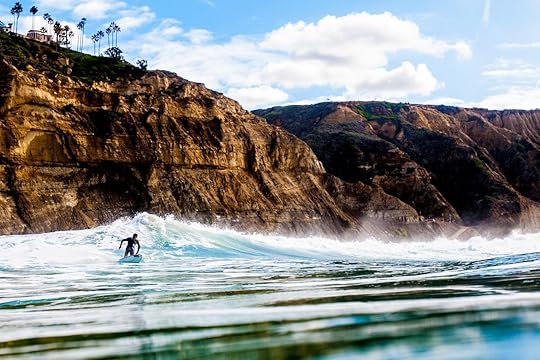
Photo: Brandon Means/Shutterstock
San Diego is one of the hottest party cities on the West Coast. But the laid-back surfer vibes and 17 miles of coastline make this California beach refuge one of our top spring break vacations for introverts. Notorious for its boardwalks and waves, a stay in Pacific Beach keeps you close to the action without being inundated with the party scene.
We recommend Tower23, legitimately across from the beach, for convenience, views, and privacy. After decent sun-soaking, explore some of the neighborhood’s local flavors on one of the hotel’s complimentary rental bikes: Miss B’s Coconut Club (not a club, we swear!) for low-key Caribbean vibes for brunch, Wayfarer Bread for homemade pastries, and the beachfront JRDN restaurant for American casual.
Don’t forget to lace the sneaks and explore all 1,400 acres of Balboa Park, once the site of the World Expo that today boasts over 40 museums and attractions, including the internationally-renowned San Diego Zoo, home to 12,000 animals alone.
If privacy is truly the priority, you can even stay in a luxury rental in an R.V. park overlooking a wilderness reserve and San Diego Bay. The city lights a distant reminder that you’re far from any other human contact. Phew.
8. Mexico’s Pacific Coast
Photo: Frederick MillettShutterstock
You won’t go wrong choosing anywhere on Mexico’s Pacific coast to plop down for the week, introvert-style. Mexico’s Pacific coast is world-renowned for all of its tropical beach clichés – white-sand beaches melting into an aquamarine flurry of waves, sunshine year-round, and a propensity for tacos al pastor and cerveza.
While Mexico’s bigger resort cities like Cancun and Tulum are well-known for their parties and crowds, there are also many more intimate Mexican beach towns where you’ll be basking in subtle paradise.
For instance, while Puerto Vallerta’s thrilling nightlife scene may be a tad overwhelming for introverts, villages such as Yelapa, only thirty minutes by boat taxi from downtown, will enchant with local culture and natural wonders. This remote coastal village is nestled between the coastline and jungle-shrouded mountains, making it one of the safest beaches in Mexico and another optimal vacation for introverts.
Believe it or not, some cruise lines offer programs that will visit a couple of Mexico’s most pristine Pacific coast beaches, including the seven-night itineraries on both Princess and Carnival departing from Long Beach, California. The day-long stops in Mexican beach towns Mazatlan and Cabo San Lucas provide ample opportunity to stretch sea-legs and traverse more unchartered beach towns brimming with nature, not frat boys.
While we know you’re thinking that a cruise ship would be an introvert’s nightmare, we counter you with this: an introvert has total control of their social interactions onboard said boat. You can retreat to your balcony rooms with a book if needing a recharge, but you can also socialize in a controlled setting should loneliness set in.
Best international spring break vacations for introverts9. Iceland
Photo: Maridav/Shutterstock
If you’re introverted and looking for an international spring break vacation, consider Iceland – less than five hours by flight from much of the US and inundated with Viking man buns. That’s right: the land of fire and ice marooned on basically the top of the globe may be best-experienced solo.
If you’re an introvert, consider skipping the corny bus tours departing from Reykjavik. Instead, rent a car, blast music ( Björk, obviously), and get blissfully lost on the island’s meandering coastal path and the Ring Road. You’ll not only be enchanted with expansive glaciers, natural hot springs, ice caves, and sprawling meadows but there’s a good chance that the Northern Lights will put on a private performance for you as well (considering they are witnessed in Iceland until May!)
Iceland’s crime rate is meager, which makes the prospect of a solo-adventure much more enticing. Plus, the Nordic countries already have a reputation for being more introverted, so we think you’ll fit right in.
10. Costa Rica
Photo: Galyna Andrushko/Shutterstock
If Eliza Thornberry, a la The Wild Thornberrys, is your braces-clad, introverted soulmate, then a vacation to Costa Rica, possessing the highest density of biodiversity worldwide, would sound quite delightful. After all, the country’s catchphrase – Pura Vida – literally translates to “pure life” or “simple life,” which kinda sounds like the words most introverts want to live by.
This pinpoint of paradise in Central America is just a few hours’ direct flights from the continental US. San Jose, the capital, maybe a bit chaotic for your liking. But a few hours driving, and you’re smack dab in introverted paradise. We highly recommend booking a stay near the imposing Arenal Volcano National Park and working off your Costa Rican coconut flan pounds (because they will be there, promise) on a brisk high-altitude hike through lava-filled terrain.
If the sea is beckoning, post up in one of Costa Rica’s many surf towns and center your gravity on a yoga mat or a surfboard. While Tamarindo precedes its reputation as a party town, the sound of waves breaking is the only thing keeping you up at night in Santa Teresa or the equally quaint Nosara.
The Monteverde Cloud Forest – lush and verdant throughout thanks to some low-hanging clouds constantly misting – is as dreamy as it sounds and a necessity all the Eliza-wannabes too. Hiking through the rainforest, keep an eye out for rare birds, monkeys, or even the illusory jaguar playing hide n’ seek. You’ll undoubtedly have a wild spring break, but maybe not in the tits-out kind of way. 
February 15, 2022
The air travel mask mandate is predicted to end before November 8

There’s no single person who can predict the future. When people put their heads together, however, they can sometimes reach a consensus on a reasonable probability that something will happen. And one recent consensus on the federal air travel mask mandate? It’ll be gone before November 8, 2022.
This is according to the online betting market Polymarket. The market currently sits at a 74 percent chance that a mask mandate for domestic flights (for all passengers, not just unvaccinated ones) won’t make it to the November midterm elections — a deadline more clearly rooted in politics than anything else.
While bettors can’t be used like some all-knowing crystal ball, there is some backing to trust their judgment. Gary Leff of the industry air travel site View from the Wing writes that he trusts prediction markets more than expert commentary because people are putting money behind their predictions rather than just making a statement. (The New York Times, however, quoted Leff’s analysis with the caveat that the mask mandate “has been extended before and could be extended again.”)
More like thisNewsThe case for putting unruly airline passengers on a federal no-fly listPolymarket is what’s called an information market, where people can buy and sell shares on the predicted outcome of an event. The prices fluctuate depending on whether people are buying “yes” or “no” shares. The price is reflected as $0.00 to $1, so it’s a simple conversion to a percent probability that the traders on Polymarket give a certain outcome ($0.74, for example, equates to a 74 percent probability).
People can buy and sell their shares like on a stock exchange. At the end date, people who put their money behind the correctly outcome are paid $1 for every correct share.
This particular masking market all started with a tweet from Nate Silver, founder and editor in chief of FiveThirtyEight. On December 31 at 7:59 AM, Silver tweeted: “A fun question for prediction markets might be: will there be a federal mask requirement in place on domestic flights as of Nov. 8, 2022? (i.e. Election Day.) I think I’d make ‘No’ about the 3:2 favorite, but wouldn’t put a lot of money on it.”
When you follow the trend lines on the market through January after it was posted on Polymarket, the prediction was a lot closer to 50-50 for much of the month. Things started to change in February as it became clear that the massive wave of infections from the omicron variant was on the decline.
As anyone who has looked at the news at any point in the last two years knows, a lot can change from the start of the year to the end. Still, if the prediction markets are correct (and studies show they are more often than not), masks on planes could be a thing of the past before the end of 2022.
7 top hotels near Black Canyon of the Gunnison National Park in Colorado
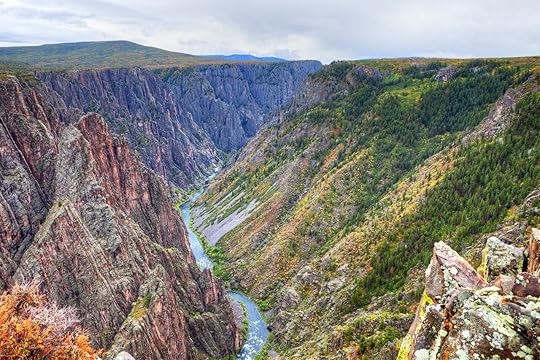
Few places in Colorado remain under-trafficked, especially when they’re gorgeous — but Black Canyon of the Gunnison National Park is one such spot. Perhaps the I-70 hordes are scared off by the canyon’s steep, intimidating walls that (at least until you’re inside) resemble the “Mountains of Shadows” from the Lord of the Rings series more than they do the Grand Canyon. It’s also a good five-hour drive from Denver, making it a bit too far beyond the overnight drive time for most visitors and residents.
But whatever the reason, the lack of Yosemite-level crowds makes Black Canyon OTG, as locals call it, not just worth hitting on a Colorado road trip, but worth staying over for a few days to take it all in. Fortunately, there are a plethora of solid hotels near Black Canyon of the Gunnison National Park.
You have a few different options for where to stay near Black Canyon of the Gunnison National Park. The closest decent-sized city is Montrose, also home to Montrose Regional Airport, the nearest functional airport to the park. If after visiting Black Canyon you plan to head north to Palisade, Grand Junction, or the parks of Moab; or south to Telluride, Ouray, or Durango (near Mesa Verde National Park), Montrose is the place to be.
Gunnison, a small but lively mountain town, is just over an hour east of the park, and you also have options in the hills between the two towns. The Gunnison/Crested Butte Regional Airport connects to Denver and select other hubs. Western State University’s college-town culture and Gunnison’s proximity to the ski hub of Crested Butte make Gunnison a better option if you want to go out at night, explore the mountains outside of the national park, or are coming from and then returning to Denver.
Ready to book? Here are the best hotels near Black Canyon of the Gunnison National Park.
We hope you love these hotels near Black Canyon of the Gunnison National Park! Just so you know, Matador may collect a small commission from the links on this page if you decide to book a stay. Listed prices are accurate as of the time of publication. See our full Advertiser Disclosure here.
Headliner hotel near Black Canyon of the Gunnison National ParkArrowhead Mountain Lodge – Cimmaron, Colorado
Photo: Booking.com

Photo: Booking.com
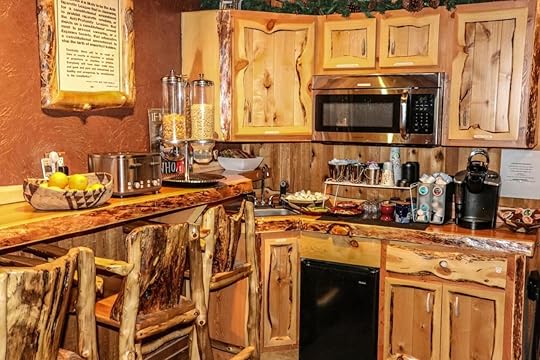
Photo: Booking.com

Photo: Booking.com

Photo: Booking.com
For a true Colorado mountain lodge experience just 45 minutes from Black Canyon of the Gunnison National Park, you can’t beat Arrowhead Mountain Lodge. Built on a hillside outside the tiny town of Cimarron, you’re more likely to encounter sheep and deer meandering past the lobby than you are a busload of clueless-but-camera-happy travelers. Despite its remote nature, the hotel has decent WiFi and an excellent restaurant serving mountain fare, as well as a lounge with breakfast and non-alcoholic drinks. This hotel makes a great base for exploring the national park and the ample hiking, boating, and biking opportunities in Curecanti National Recreation Area and the surrounding mountains.
Price: From $145 per night
Montrose hotels near Black Canyon of the Gunnison National ParkBlack Canyon Motel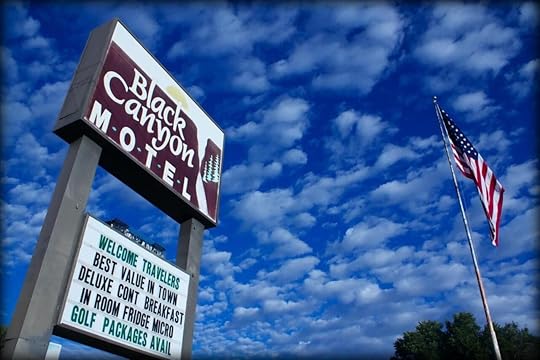
Photo: Booking.com

Photo: Booking.com

Photo: Booking.com
Basic mountain accommodations and easy access to the park are what you’ll get at Black Canyon Motel on the outskirts of Montrose. The pool and hot tub are open during warmer months, allowing for a post-adventure soak session that pairs well with a crowler from the nearby Horsefly Brewing Company. The continental breakfast is proclaimed “deluxe.” If you’re looking to adventure hard, crash out, and then repeat the process again the next day, this is the spot at which to base yourself. It’s a great choice for visitors who plan on long, all-day hikes.
Price: From $110 per night
Red Arrow Inn & Suites
Photo: Booking.com

Photo: Booking.com
Step it up a notch with a stay at Red Arrow Inn & Suites. This hotel is ideal for families that want a bit more room to spread out and some rooms even have balconies. Breakfast is served hot in the morning and the hotel’s location on the east end of Montrose puts you about 20 minutes from the park entrance. You’re also a quick hop to downtown Montrose for shopping, dining, breweries, and gear shops and rentals.
Price: From $132 per night
The Blue Bungalow
Photo: Booking.com
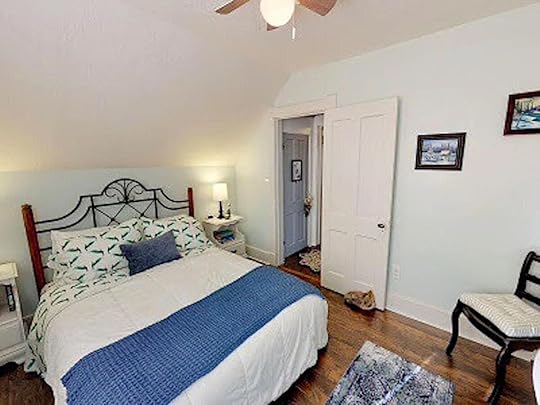
Photo: Booking.com

Photo: Booking.com

Photo: Booking.com
For a cute, roomy stay, book your family or crew into this cute mountain house in the heart of Montrose. At Blue Bungalow, you get the best hotel comfort and short-term rental convenience and amenities. This includes private bedrooms, a kitchen, and a living room for lounging after a full day of exploring the park. Chill on the sun terrace, then walk to downtown Montrose for dinner or shopping. Black Canyon of the Gunnison National Park is about 25 minutes from home. This spot is also perfect for couples who desire privacy along with its convenience.
Price: $129 per night
Gunnison hotels near Black Canyon of the Gunnison National ParkThe Gunnison Inn at Dos Rios Golf Course
Taking a national parks road trip through Colorado? Check out Matador’s guides to the best places to stay in Colorado:
Southern Colorado Airbnbs for an authentic mountain getaway 10 Airbnb Estes Park area rentals for a beautiful Rocky Mountain National Park stay The best Airbnbs in Aspen to vacation like a celebrity without the price tag 7 Vail Airbnbs that make you feel like you’re in the heart of Bavaria The 12 best Airbnbs in Denver for beer tours, 420, and mountain vibes

Photo: Booking.com

Photo: Booking.com

Photo: Booking.com

Photo: Booking.com
On the western edge of Gunnison, The Gunnison Inn at Dos Rios Golf Course is a mountain escape trimmed with mountain-chic details. Booking a room ensures comfort, good food, and a gorgeous setting on a golf course just off the Gunnison River (which carved the canyon you’re there to visit). The hotel is excellent for families as the kids will have room to explore while the adults relax on the patio. Dinner in Gunnison is just a few minutes away.
Price: From $170 per night
The Inn at Tomichi Village
Photo: Booking.com

Photo: Booking.com

Photo: Booking.com

Photo: Booking.com
With a nice pool and hot tub and extensive amenities like a fireside lounge, on-site breakfast, and quiet rooms, The Inn at Tomichi Village is a step up from the typical roadside mountain hotel and one of the top hotels near Black Canyon of the Gunnison National Park. The outdoor fire pit is comfortable and warm on those chilly high-altitude evenings. Biking or driving into town for dinner or a drink is easy, and the hotel’s west Gunnison location puts you directly on the highway towards Black Canyon OTG.
Price: From $189 per night
The Wanderlust Hostel
Photo: Booking.com
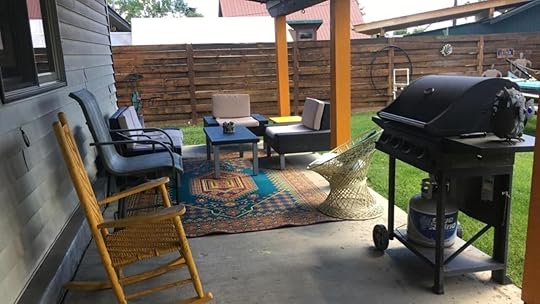
Photo: Booking.com

Photo: Booking.com

Photo: Booking.com
If you’re looking to dive right into Gunnison’s vibrant mountain culture and it’s surrounding après-adventure scene, check into The Wanderlust Hostel. You’ll find a communal atmosphere with free bike rentals to pedal around town, good WiFi, and a shared kitchen. Meeting people here is easy, as guests tend to hang around over a beer in the yard or in the living room. Choose from bunk or private accommodation, and be ready to get after it in the park and mountains. 
Price: From $58 per night
More like thisTravelThe optimal itinerary for a US national park road trip, mappedDon’t miss Afro-Caribbean food on your next trip to Costa Rica
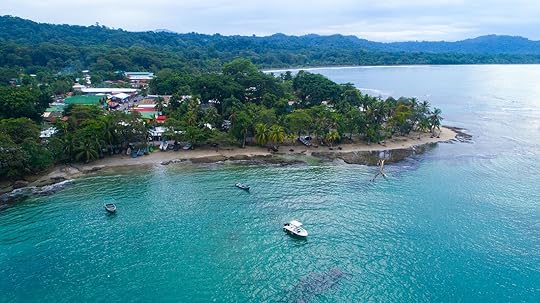
I’d only been in San Jose, Costa Rica for ten minutes when I sat down for my first meal. My group pulled up a chair at RostiPollos, a chain restaurant (but locally-loved) for coffee bean-roasted chicken. The restaurant offered a feast that included yucca, plantain, rice, beans, and fresh pineapple juice. It was an excellent first food experience, but I was itching to hop on the plane for a taste of Limón, the Caribbean side of Costa Rica. As we arrived at the domestic airport, our driver Diego waved us goodbye into the terminal.
“You’re going to love Limón,” he said, bolstering my excitement even more. “It’s like being in Jamaica.”
Diego was right. Eating your way through Limón is a blended feast of Caribbean, indigenous, and Costa Rican flavors. Here’s a rundown of the best ways to experience indigenous and Afro-Caribbean food in Costa Rica, plus the best dishes to try in between snorkeling and sunbathing on this stunning tropical island.
Eat with Costa Rica’s indigenous community
Photo: Nature’s Charm/Shutterstock
The best way to experience indigenous plates in Limón, Costa Rica, is to go straight to the source: The BriBri. They’re an indigenous group of people who live in the foothills of the Talamanca Mountains. Thousands of BriBri people call the region home, and it’s here that they remain connected to many plants and traditional ways of life.
The Watsi Reservation, where the BriBri community lives, takes visitors through their garden to smell, taste, and feel various plants used in BriBri dishes and the chocolate-making process. After experiencing the park, the family at the reservation serves up a medley of yucca, banana, squash, and chicken stewed in onions and garlic and eaten out of a banana leaf. The meal ends with sips of Cas, a Costa Rican guava, that can also be found in Nicaragua and Guatemala.
The Afro-Caribbean influence on Costa Rican foodThere are over 200 miles of coastline on the Caribbean coast of Costa Rica, and many Afro-Costa Ricans have called the Limón region home for years. In the 15th and 16th centuries, enslaved Africans were transported to colonies all over the Americas, including Costa Rica, and were forced to live and work there. Another wave of migration to Costa Rica happened in the 19th century, this time voluntary, when many Black folks arrived in Costa Rica from neighboring Caribbean countries like Jamaica in hopes of economic opportunity. Instead they worked on banana plantations throughout Limón, where they were subject to harsh working conditions and Jim-Crow like segregation that forced them to settle near the plantations because they weren’t allowed to move freely around the country.
Though that shameful history of enslavement and forced labor is painful to look back on, generations of Afro-Caribbean people have shaped the cuisine of Costa Rica, influencing the ingredients and flavors that have made their way into the country’s many traditional dishes over the years. In fact, Afro-Caribbean culture looms large in the region, from music to fashion, but food might be one of the easiest (and best) ways to experience this meshing of many worlds. It’s not uncommon to find bananas and plantains in most meals and other spices well-loved in Caribbean nations like ginger and coconut. An authentic taste of Limón is a delicious ode to the Caribbean and West African influences that show up on every plate.
In Puerto Viejo, some locally recommended must-tastes include Tamara, a classic Caribbean restaurant with Koki Beach for oceanside Costa Rican-Caribbean bites.
Afro-Caribbean food to try in Costa RicaGallo pinto

Photo: lborgephoto123/Shutterstock
Mornings in Limón start with a Caribbean twist on one of Costa Rica’s beloved dishes, gallo pinto. Breakfast consists of a spread of eggs, local halloumi-like cheese, coconut milk-cooked rice and black beans, and a handmade corn tortilla. It’s a hearty breakfast that’s filling for but still light enough to not weigh you down for the day. Gallo pinto parallels one of the most popular breakfasts in Ghana, featuring rice, beans, eggs, plantain, meat, and more. Both are often wrapped and served in banana leaves.
Another version of gallo pinto can be found on Costa Rica’s0. Caribbean coast. At Selva Bananito Lodge—a sustainable eco-lodge tucked in the jungle of the Muchilla Mountains serves their gallo pinto with all the standard fixings, however instead of a tortilla, they serve the dish with fresh baked bread. And in Puerto Viejo, Boutique jungle hotel Aguas Claras’ Papaya Restaurant serves a more traditional version of the dish but with a hint of spice in the rice and beans, which is only right on the Caribbean side of Costa Rica.
Patí
If anything is a taste of the Caribbean, it’s patí. The Costa Rican beef turnover is similar to Jamaican beef patties and empanadas found throughout Latin America. However in Costa Rica, these patties are made using Panamanian chiles for a bit of a spicy kick. Aguas Claras serves delicious patí, but street food lovers can easily find roadside vendors selling them in Puerto Viejo and other popular areas of Limón.
Rondón Soup

Photo: Fanfo/Shutterstock
With Jamaican and Tobagonians roots, rondón (Jamaican Patois for ‘run down’) is a coconut milk soup that lands somewhere between chowder and curry stew. It’s a medley of fresh seafood like fish and crab, plantain, yucca, yam, and other vegetables tied together with seasonings like thyme and cilantro. Like gallo pinto, the dishes from this area typically have a bit of spice thanks to one of the region’s most essential ingredients, the Panamanian chile.
If you’re making a pit stop in San José, a visit to Maxi’s by Ricky is a necessity. Located in the San Ana neighborhood and frequented by locals, the homey, outdoor dining restaurant serves up a great bowl of rondón. You’ll find a similar style soup in Limón: rich in seafood from crab to octopus with cassava, taro, plantain, and chiles. You can find other popular Caribbean dishes here, too, like ceviche, Jamaican oxtail, and gallo pinto served with shrimp. 
Foods in NOLA during Mardi Gras

If there are two things New Orleans is known for its jazz and food. Okay, maybe three – the parties are pretty good, too. Visitors arrive in the city eager to try po’boys piled with fried catfish, fresh oysters and shrimp fished straight from the Gulf, to sample the iconic smoky and spicy flavors of New Orleans signature Creole and Cajun cuisine. But there are so many iconic restaurants in this city, where it’s actually difficult to come across a bad meal. So where do you start? Well, our first piece of advice is to avoid Bourbon Street if you want to experience classic New Orleans cuisine done right – and well. The best restaurants in New Orleans specialize in fresh seafood, a homemade mix of spices, and hand crafted cocktails.
Whether you’re visiting New Orleans for Mardi Gras and need a break between Hurricane cocktails and shots of whiskey for a meal that will satisfy your soul, or you landed in New Orleans just to take a food tour of the city, this guide to the best restaurants in New Orleans wil help you decide where to eat. Here are seven New Orleans restaurants that locals love and that anyone from out of town should try.
1. Irene’s
Photo by Just a Girl From LA
Irene’s diverges from the typical Creole and Cajun cuisine by serving French and Italian-influenced dishes – all with a New Orleans twist. There are oysters baked with pancetta and a shrimp and crawfish fettuccine on offer, for instance. However, it’s the Duck St. Phillip dish – roasted and glazed with a pecan and raspberry sauce – that guests keep coming back for. The elegant dining room outfitted in warm wood paneling also features a piano bar.
2. Deanie’sNamed “the best place for crawfish” by New Orleans magazine in 2014, Deanie’s legendary, and rightfully so. The restaurant’s signature Creole seasoning infuses Deanie’s seafood with a smokey heat. Start with the artichoke hearts, but save room for the giant seafood platter, which includes fried oysters, shrimp, catfish, soft-shell crabs, and crawfish balls. This tower of fried seafood arrives at the table looking like a personal challenge from Poseidon. The platter’s menagerie of sea creatures are fried in a flavorful combination of yellow flour, buttermilk and Deanie’s signature seasonings.
3. Red Fish Grill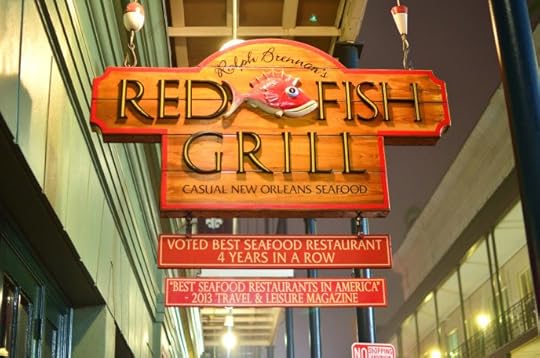
Photo by Just a Girl From LA
The mantra at the Red Fish Grill is, “Friends don’t let friends eat frozen fish.” Serving Gulf fish, oysters, shrimp, and crawfish in a casual environment, the restaurant also offers bottomless brunch cocktails on the weekends. Red Fish Grill specializes in Dungeness crab, so you might want to start your meal there.
4. Cafe AmelieKnown for its courtyard decorated with lush green plants, Cafe Amelie has an undeniably romantic atmosphere. In fact, it was even named for a woman named who happened to live nearby – Amelie Miltenberger, the mother of Princess Alice, the first American Princess of Monaco. The elegant cocktails, created in house, feature ingredients like vanilla liqueur, passionfruit, hibiscus, lavender essence, and sage. Meanwhile, the food menu features New Orlean classics like shrimp and grits and gumbo.
5. Brennan’s
A photo posted by Charla Wood (@charlawood) on Dec 12, 2015 at 11:14am PST
Brennan’s originally opened in 1946, and recently emerged from an extensive renovation that was spared no expense by new co-owners, Terry White and Ralph Brennan. The dishes are rooted in Creole cooking traditions but it’s must try dish might be the bananas foster dessert, which the restaurant claims it actually invented in 1950. Brennan’s is also known of it’s legendary breakfast, where diners can include in a leisurely meal of turtle soup and eggs hussarde.
6. Acme Oyster HouseLocated in the French Quarter, there’s usually a line forming on the street to get into Acme Oyster House. True to its name, this restaurant is known for its fresh Louisiana oysters, as well as Cajun and Creole dishes. Prepare to wait for a table, but just know that it’s worth it. Once you’re settled at your table, order the chargrilled oysters and a pound or two of crawfish.
7. Parkway Bakery & Tavern
A photo posted by Renaissance N.O. Arts Hotel (@renartsnola) on Nov 23, 2014 at 2:26pm PST
A trip to New Orleans isn’t complete without a delicious po’ boy, and Parkway has the best one in New Orleans. Open since 1911, Parkway is a classic New Orleans restaurant. The Parkway po’boys are an array with tempting ingredients, from fried gulf oysters, to Creole barbecue shrimp, and alligator smoked sausage. Our favorite is the French dip au jus po’boy.
This sandwich is serious business in New Orleans, not to be missed if you’re visiting for Mardi Gras. “It’s like going to church. It’s like walking your dog,” Parkway manager and chef Justin Kennedy says of the po’boy. “It’s the lifeblood in New Orleans.” 
Matador Network's Blog
- Matador Network's profile
- 6 followers



